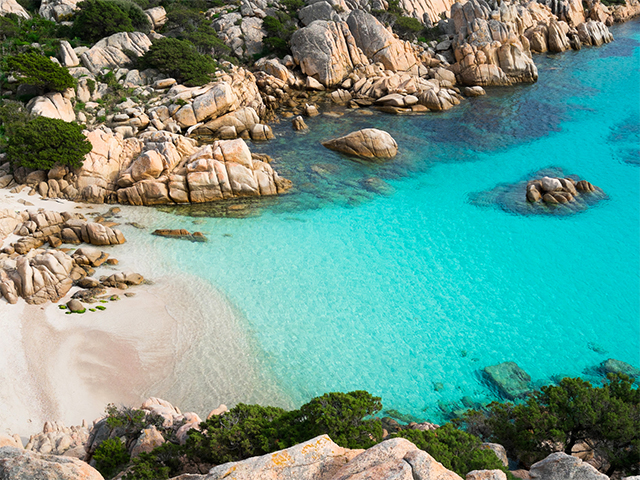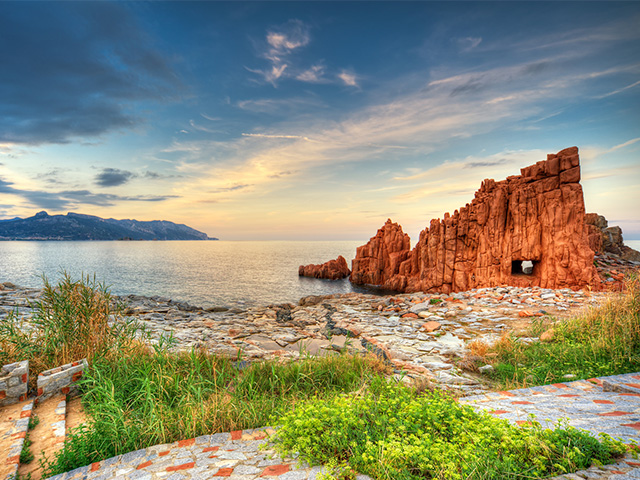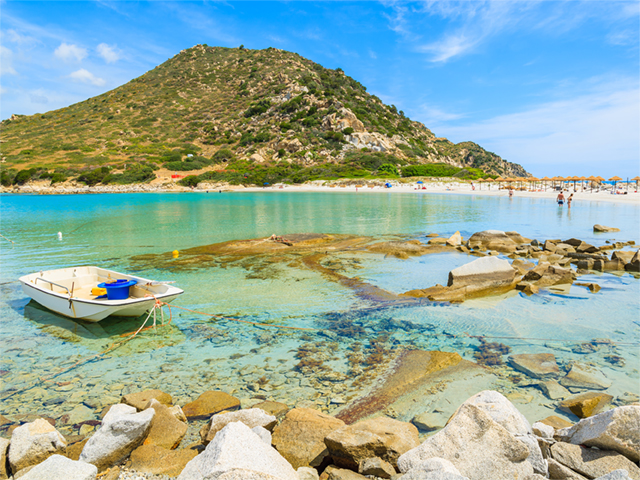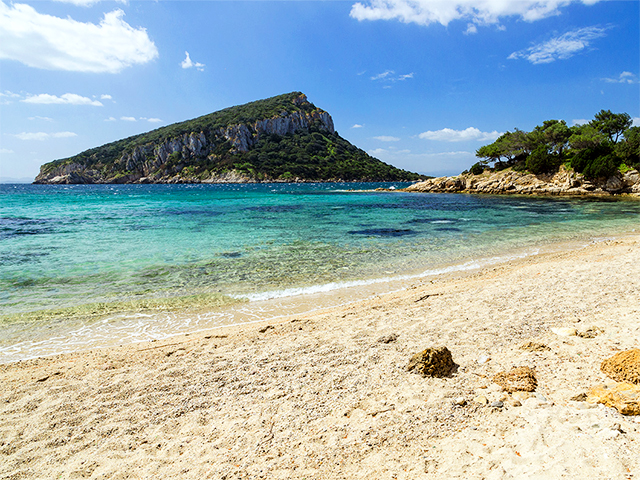Porto Torres: 10 things to do and see
What to visit in Porto Torres? Discover the most beautiful beaches, the Asinara, museums, monuments and the most important archeological sites for your perfect holidaysTravelling to Porto Torres not only means spending your holidays sunbathing by the sea, but also visiting one of the most interesting sea towns in the whole Sardinia.
At the center of the Gulf of Asinara, Porto Torres enjoys a privileged position and it is connected to the Port of Civitavecchia, since it is an intermediate stop of the route Rome-Barcelona by Grimaldi Lines.
History and natural beauties live together in this territory, one of the most fascinating in the island.
Little more than 30 minutes away, Stintino with the beautiful beach of Pelosa and the National Park of Asinara are worth the price of the ticket.
But Porto Torres is much more! Continue reading this article and we'll discover together the main points of interest to visit.
1. The Aragonese Tower
True symbol of the city, the Aragonese Tower is located just outside the tourist port. The tower is 14 meters high and 13 meters wide, with a a characteristic octagonal form, and it dates back to Spanish times (1323 d.C.) when Don Alfonso V of Aragon commissioned its construction with the aim to defend the city.
Finished in 1326 by Admiral Carroz, the tower has 3 floors: cistern at the first floor, rooms at the second floor and terrace with walkaways and embrasures for the guard.
Restored many times, along the centuries the tower has had different roles: in the 15th century it was a customs office working as fiscal control, in the 16th century it became an important defensive stronghold against barbaric attacks and finally in the 20th century it was transformed into a lighthouse.
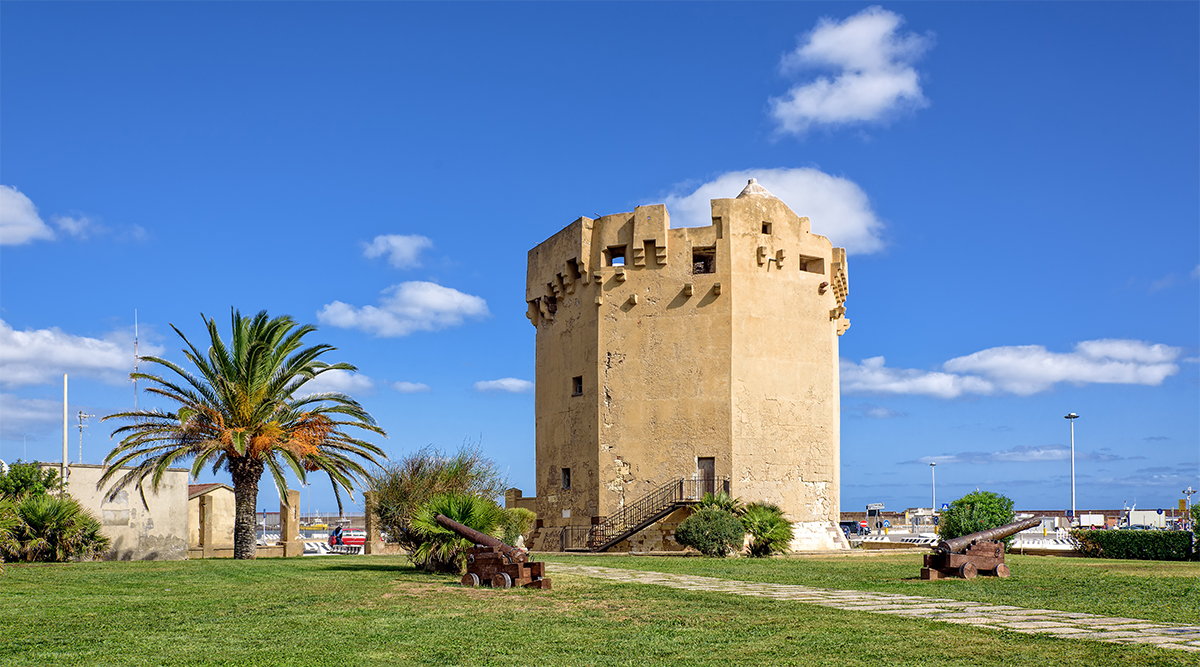
Aragonese Tower - Porto Torres
2. Basilica of San Gavino
The Basilica of San Gavino is the biggest and oldest Romanic church in Sardinia. In the interior it houses the remains of Saints Gavino, Proto and Gianuario, the 3 martirs to whom is devoted the Festha Manna, important celebration that we will explain below.
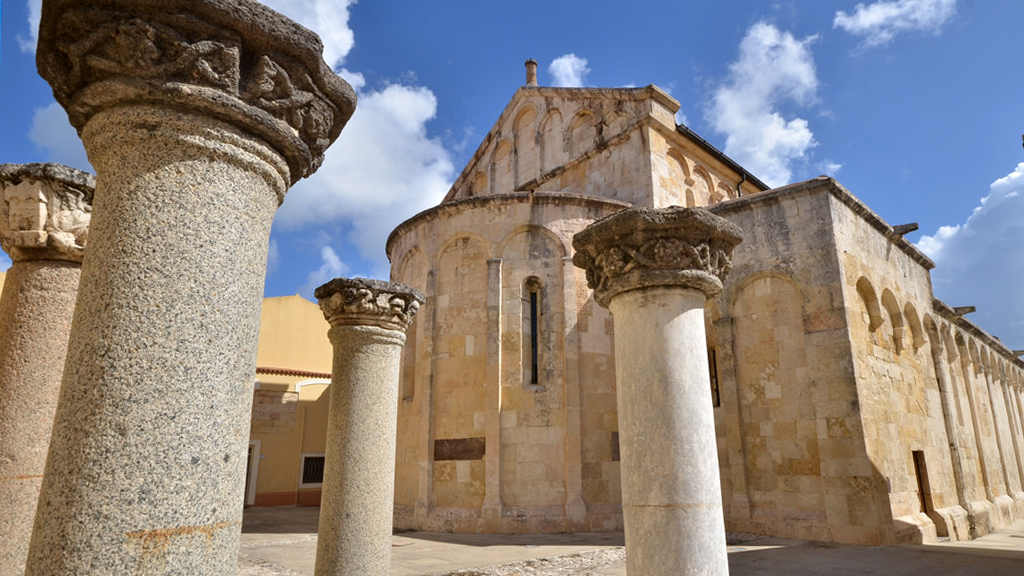
Basilica of San Gavino - Porto Torres
At the exterior of the Church of San Gavino you can admire the wonderful portal in Catalan Gothic style. It is surmounted by a rounded arch supported by two columns, whose capitals have angels with coats of arms.
The magnific façade contrasts the discrete charm of the interior, barely illuminated by the light coming from the openings in the walls that reflects in the columns and marble capitals brought from old Roman and Byzantine buildings.
The church has two apses, one on each shorter side of the rectangular plan: corresponding to the West apse is the altar, and to the East apse is a wooden catafalque with the statues of the three martyrs and a seventeenth-century equestrian statue representing San Gavino.
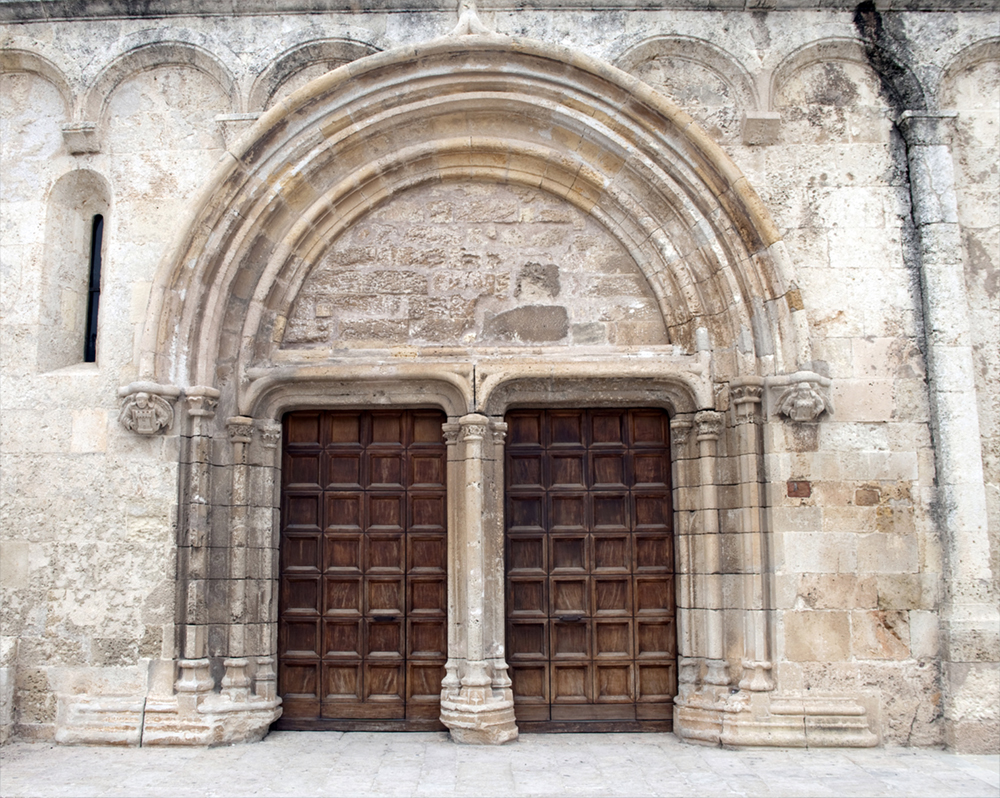
Portal of the Basilica of San Gavino - Porto Torres
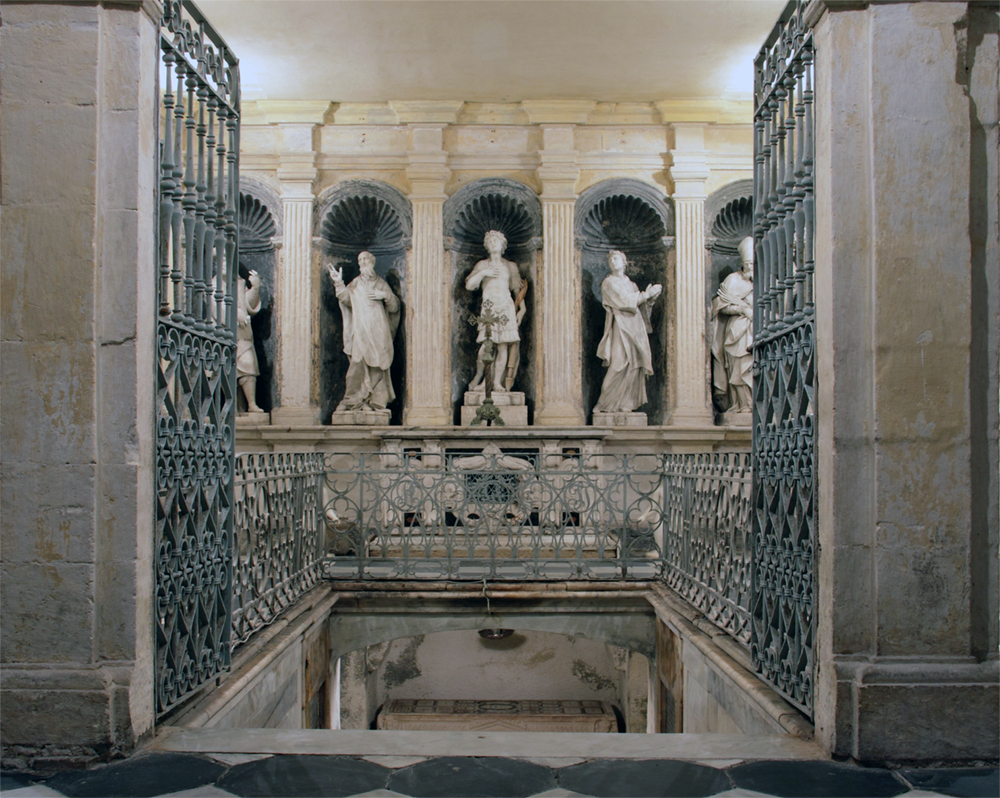
Statues of the Saints in the Basilica of San Gavino - Porto Torres
3. Church of San Gavino a Mare and Beach of Balai
The Sanctuary of San Gavino a Mare, also known as church of Balai, is a small white point outstanding over the light blue see of Porto Torres and it has a commanding position overlooking the small and gracious beach of Balai.
Tradition tells that this small church was built on the exact point in the shore where the sea stream took the corpses of the 3 martyrs Gavino, Proto and Gianuario and, as we said before, during the Festha Manna (on the 45th day after Easter) the wooden statues of the three martyrs are carried in procession from the Church of San Gavino until this point.
In fact, on the left side of the church you can still see the alleged tomb of the martys, while on the courtyard at the entrance, through a small grating you can see a Roman hypogeum.
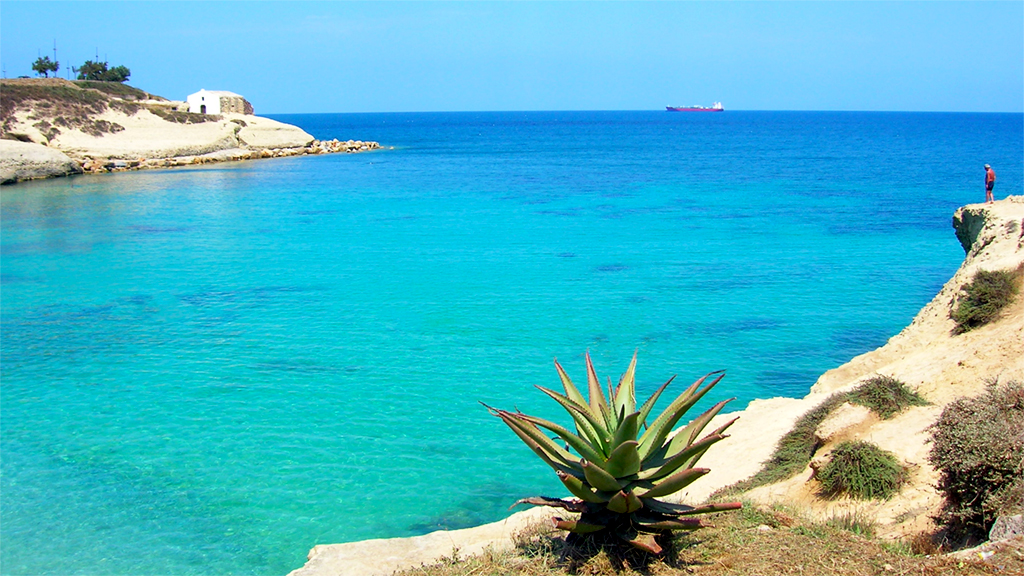
Small church of Balai - Porto Torres
The Beach of Balai is a small inlet characterised by a shallow sandy sea bottom with intense blue waters. At both sides of the coast stand high cliffs where the boldest usually climb and show acrobatic jumps. Surrounding the beach is a really green garden of palms and flowers.
With the small church of Balai on the background you will feel like in a postcard!
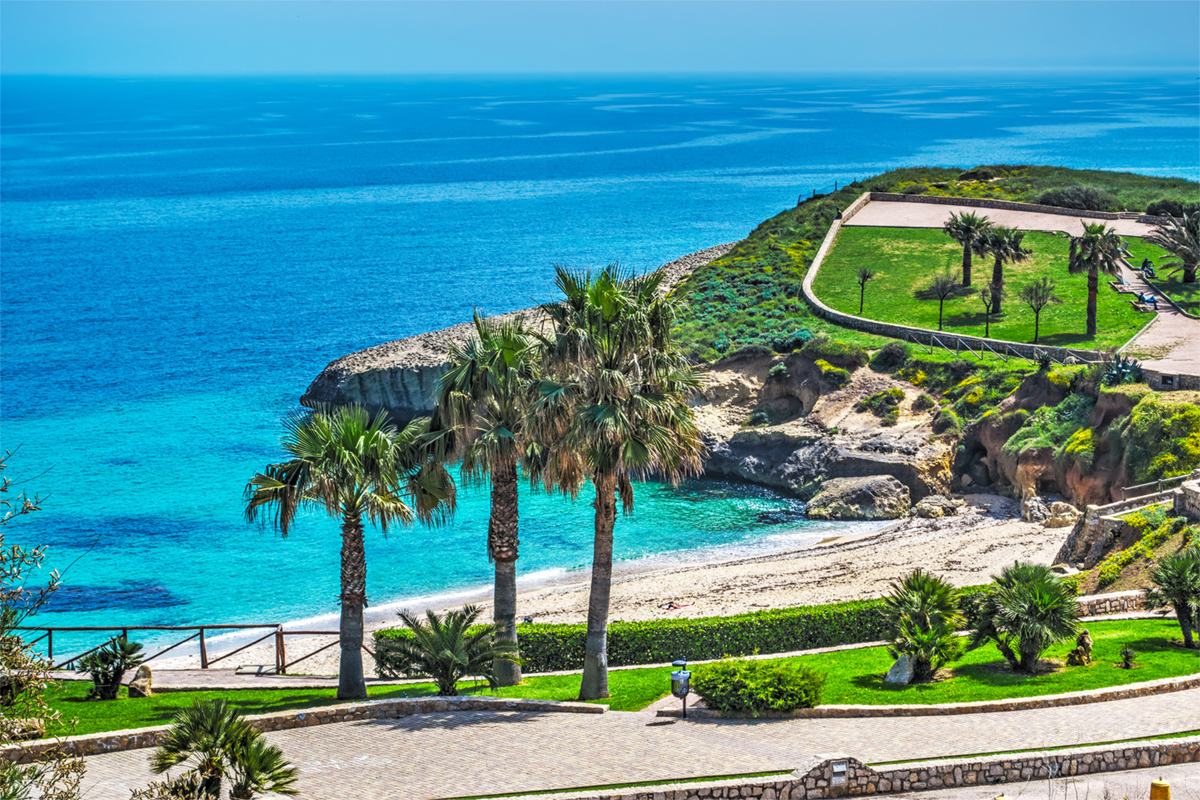
Beach of Balai - Porto Torres
4. Archeological National Museum Antiquarium Turritano
The Museum of the Antiquarium Turritano, inaugurated in 1984, has archaeological materials that document the various phases of the life of the Roman city of Turris Libisonis, the ancient name of the Roman colony founded by Julius Caesar around 45 B.C.
Porto Torres, in fact, grew around the ancient town and the excavations carried out over the years have brought to light numerous finds you can admire in the exhibition of the museum.
The museum is organised over two floors: at the ground floor are exhibited materials from the necropolis, like an honorary marble statue of a Roman magistrate, bronze items, amphoras, coins, the mask of a Satyr, probably a decorative element of a fountain, and the altar of Bubastis, a feline Egyptian goddess.
At the first floor are displayed remains from the Central Thermal Baths, the section of marbles and also the council collection, get together by mr. Emilio Paglietti between the 19th and 20th centuries and that was the first nucleus of the museum.
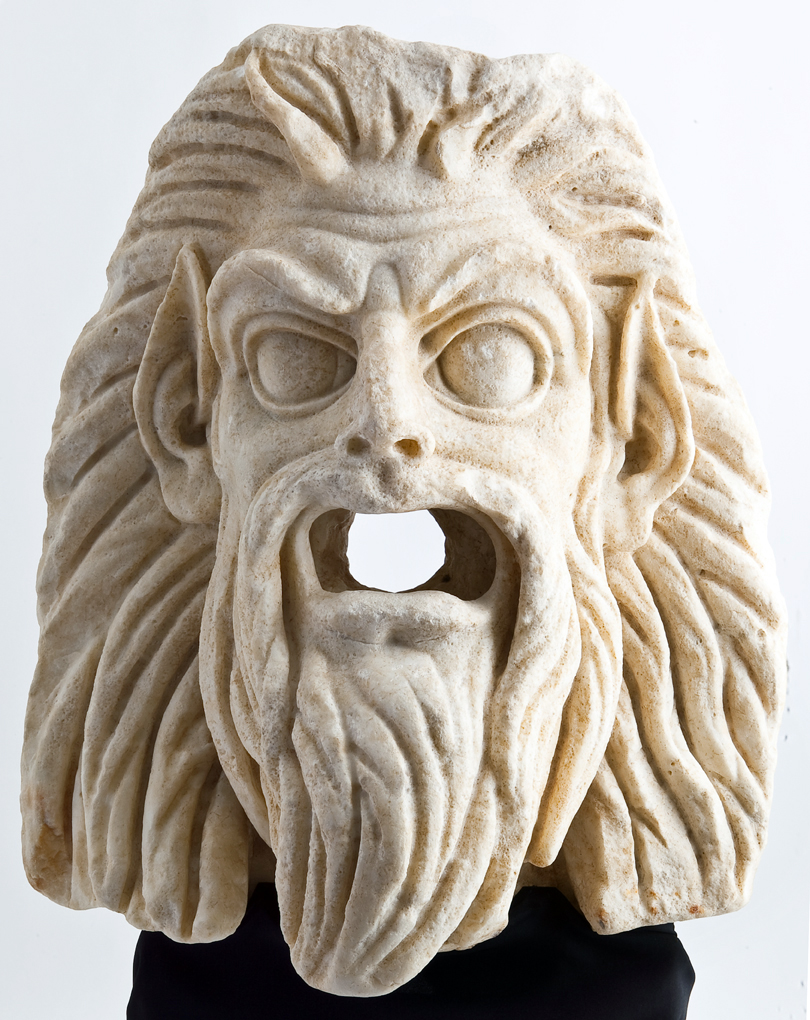
Antiquarium Turritano Museum - Mask of a Satyr
In addition to the museum, we recommend you to visit also the wide archeological area that includes: the Central Thermal Baths, also known as "Palace of the Barbaric King", the House of Orpheus with its beautiful mosaics, Maetzke Thermal Baths, the House of the mosaics, the Pallottino Thermal Baths.
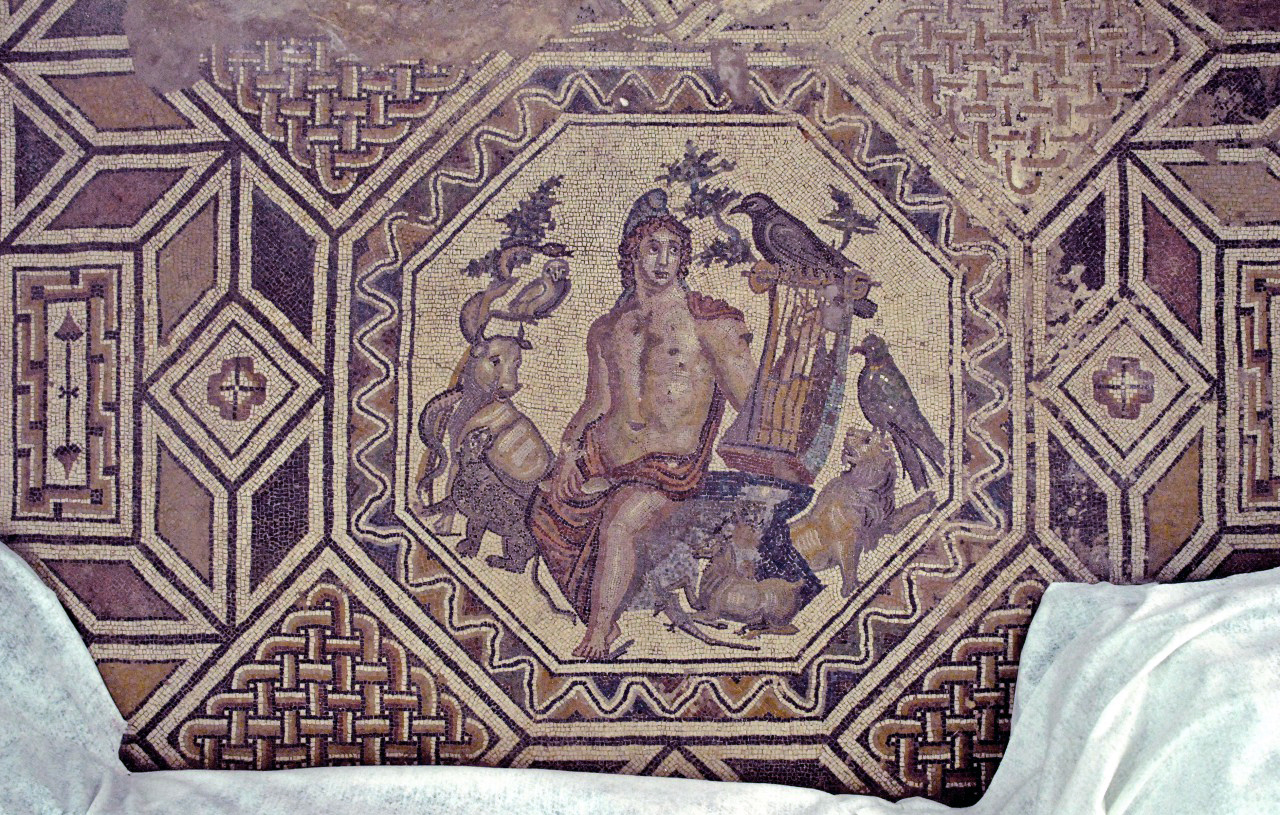
House of Orpheus - Porto Torres
5. Roman Bridge
This 135 meter-long bridge built over the river Rio Mannu dates back to the 1st century A.D., during the principality of Tiberius and served to put in connection Porto Torres with the Sardinian hinterland.
The bridge is supported by seven archs of different heights depending on the conformation of the ground. The structure was built using limestone blocks deriving from the quarries of the place and reinforced by trachyte to support the parts placed below the level of the water.
Between the biggest arches you can observe two niches which are adapted to accommodate the statues of fluvial divinities. Moreover there is a carved high relief in the keystone of the first arch.
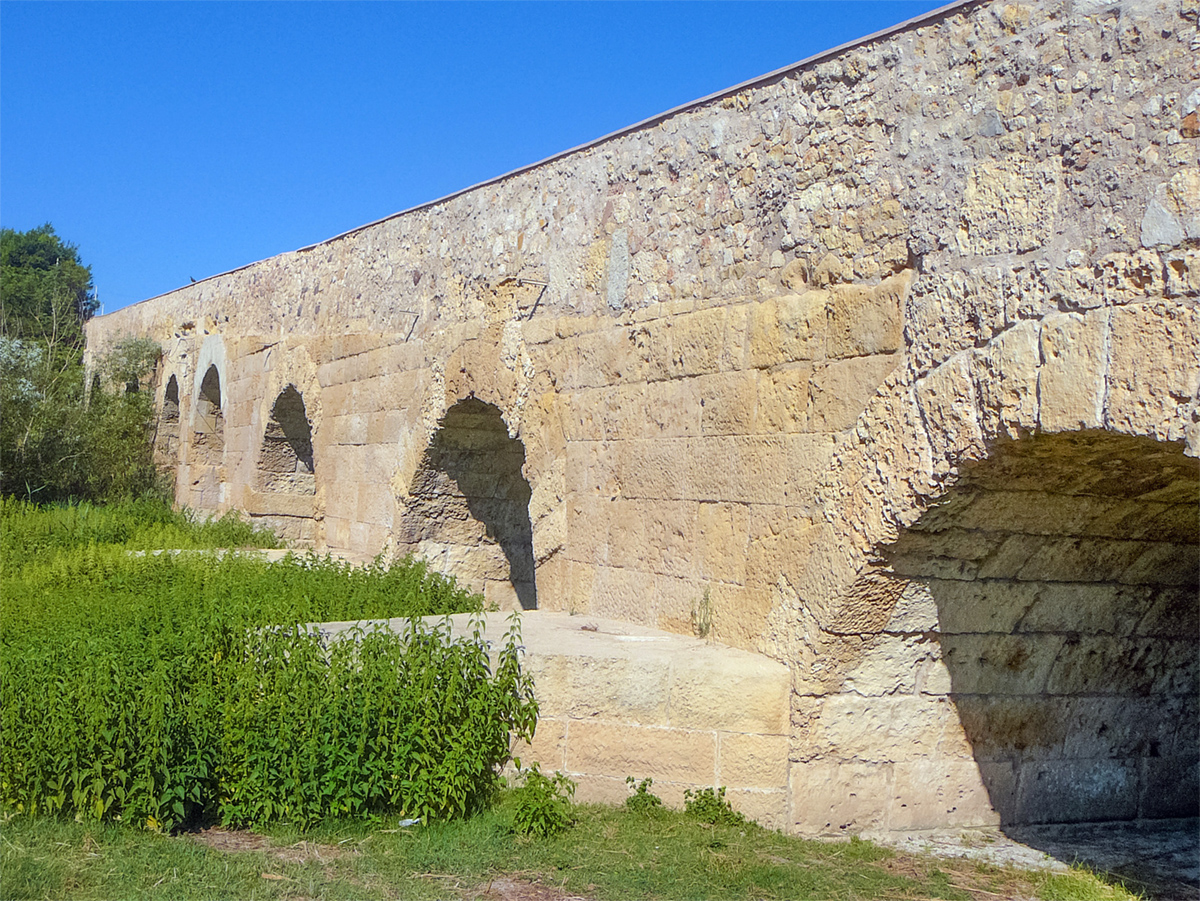
Porto Torres - Roman Bridge
6. The Necropolis of Su Crucifissu Mannu
If you like history and archeological sites, Porto Torres will certainly not let you down! Little less than 5 km away from the city center, close to the State Road 131 Carlo Felice, you can visit the Hypogeum Necropolis of Su Crucifisu Mannu.
The site includes nearly twenty-two domus de janas, all made in the period between the Neolithic (IV millennium BC) and the Copper Age (III millennium BC) and used during Roman Age until the time of Bonnanaro culture.
The tombs are connected with each other and some are decorated with architectural elements typical of civil buildings like steps, columns and decorative low relieves carved into the rock.
Research have found many ceramics, vases, bracelets and other hand-made objects like 3 idol figures representing Goddess Mother. It is worth noting the finding of a human cranium with traces of an operation of drilling of the skull, a prove of how medicine and surgery were already particularly advanced.
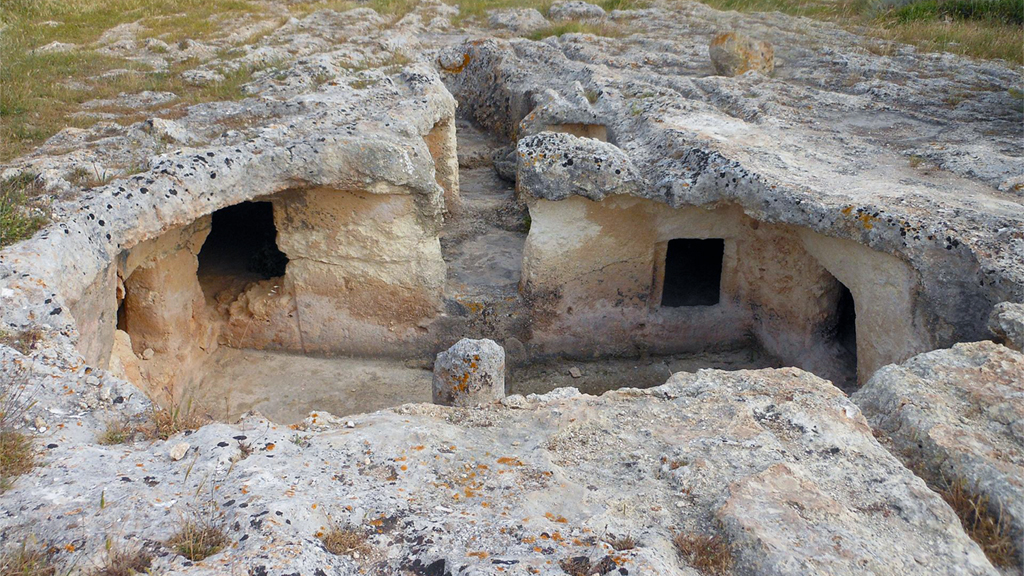
Necropolis of Su Crucifissu Mannu - Porto Torres (Picture by Gianni Careddu) CC BY-SA 3.0
7. Prehistoric Altar in Monte d’Accoddi
What is a ziggurat doing in Sardinia? Well, whether you like archeology or not, you must know that the Prehistoric Altar in Monte d'Accoddi is absolutely the oldest building in Italy!
To reach it you just have to take the SS131 that from Porto Torres arrives to Sassari, turn on the right and follow the signs for parking.
Built in 2700 B.C., this mysterious monument is unique in the world, in fact, unlike other Mesopotamian ziggurat made of clay and completely destroyed over time, this stone altar has survived until today.
The structure, almost 6 meters high, was initially a temple, called "the red temple" due to its ocre walls (3000 B.C.).
Close to the monument, in addition to the altar are other pre-nuragic building remains like two big limestone stones representing the Sun and the Moon, a limestone dolmen of 8.2 tons and 3 x 3 meters, used maybe as a talbe for offerings or sacrifice rites. On the opposite site is a limestone menhir of 4.40 meters high and 5.7 tons.
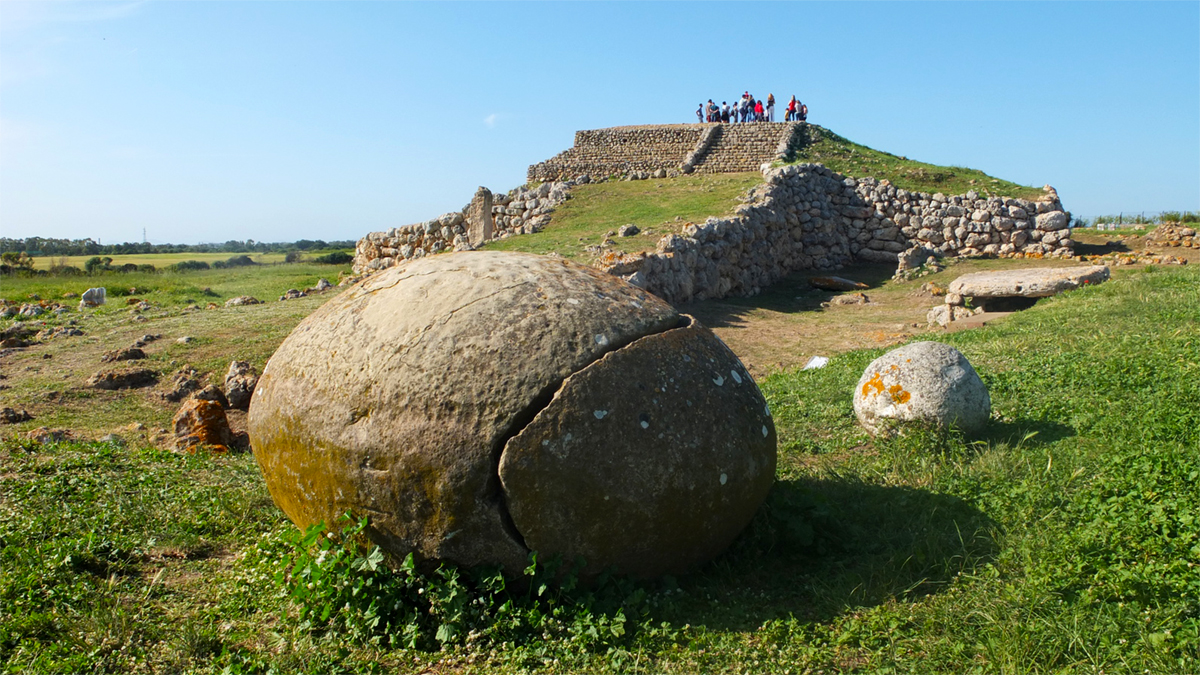
Prehistoric Alter in Monte d'Accoddi (Porto Torres)
8. Platamona Beach
Only 7 km away from Porto Torres starts the long Platamona beach with 8 km of coastline until Castelsardo, passing by Sassari and Sorso.
The particular fact about this beach, highly frequented, is its sand of large grains which in some parts is particularly rich of pebbles and shells. Ideal for long walks by the shore. Behind Platamona is a pleasant pine forest that contributes to make it an even more beautiful landscape, offering also a cool shelter from the hottest days.
The sea is transparent and from the low and sandy seabed, of colors which vary from emerald green, to blue turquoise and presents in some stretches some algae posidonia which however do not adversely affect the general appearance. It is equipped both with ample spaces of free beach and bars and restaurants, as well as some stretches of beach for dogs.
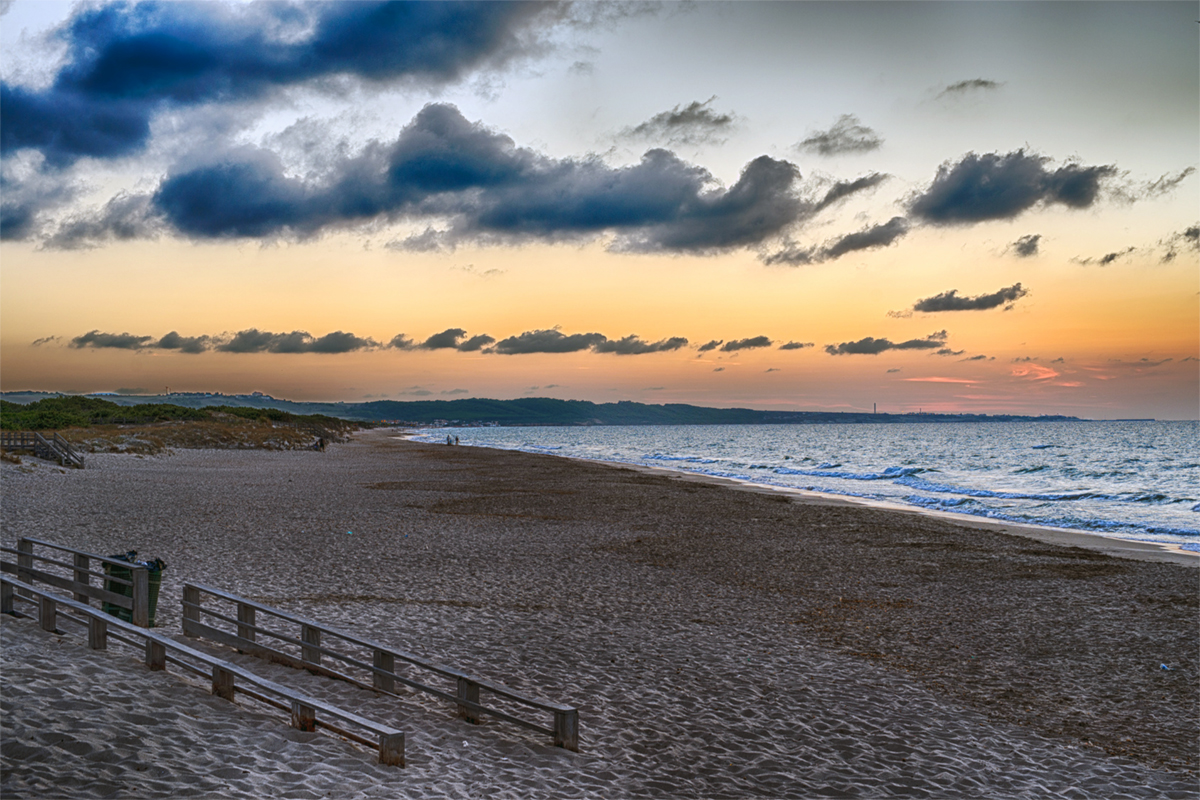
Platamona Beach
9. Beach of Pelosa (Stintino)
If you are at Porto Torres, you can't miss the chance to bath in the beach of Pelosa, considered absolutely the most beautiful beach in Sardinia, thanks to its very thin sand and its clear waters, probably the cleanest in Italy.
From Porto Torres you only need to follow road SP57 up to the crossroads with Pozzo San Nicola and then take SP34 towards Stintino: 30 minutes and you'll be there!
The beach, it goes without saying, is always full so if you want to fully enjoy it, we recommend you to get there early in the morning or visit in the months of June or September. The beach counts with bars, hotels, restaurants, shops and many services like pay parking area.
Less than 300 meters north is the smallest but not less beautiful beach of Pelosetta with the Pelosa Island in front, which you can reach by swimming. North-East you'll see Piana Island and Asinara Island.
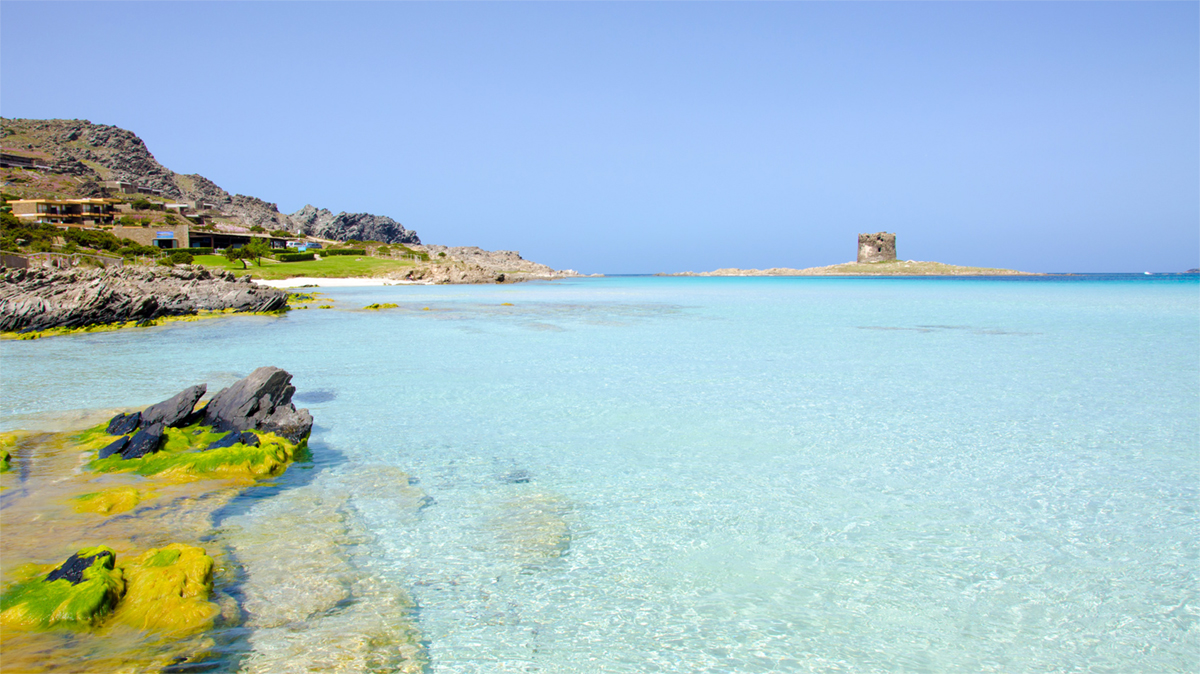
Beach of Pelosa (Stintino)
10. Visiting Asinara National Park
From Porto Torres you can get a ferry (€15 return ticket) and reach the island of Asinara, once known for the maximum security prison and today great National Park, famous world-wide for its rich flora and fauna.
Visiting this unspoilt area is an experience you can absolutely not miss! Book your trip with any tour operator and plunge into the beauty of its nature.
The typical Mediterranean vegetation, with well 678 species of plants, is very rich.
The fauna, in addition to the famous White Donkey, symbol of the island to which it owes its name, counts with many other animals that live here undisturbed: mouflon, boars, horses, different bird species, like the Audouin's gull, the European shag, the peregrine falcon, the Barbary partridge and the Eurasian magpie.
Also, we can't forget the wonderful inlets, first of all Cala Sant'Andrea or Cala d'Arena, where you can take a refreshing bath.
Se, lo desiderate inoltre, in alcuni periodi dell'anno, è anche possibile visitare l'ex carcere di massima sicurezza: un'esperienza suggestiva per conoscere da vicino un'importante e controverso capitolo della storia d'Italia.
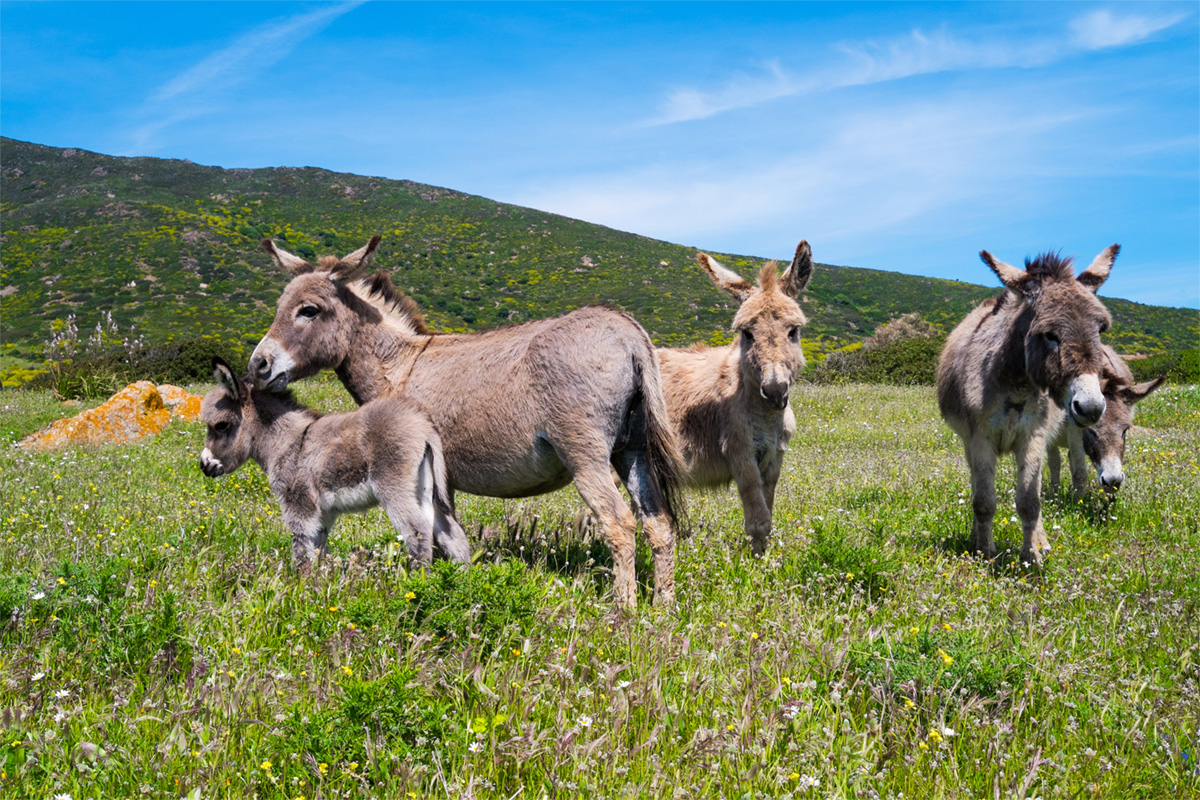
Asinara National Park with the typical Donkeys
Bon voyage!



 PORT MOBILITY CIVITAVECCHIA
PORT MOBILITY CIVITAVECCHIA








